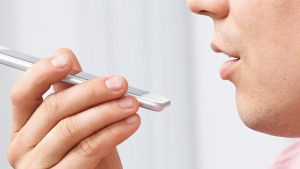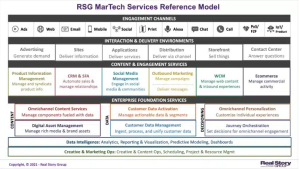With 2015 coming to a close, retailers are looking ahead for the next wave of technology that will impact in-store innovation. While we’re still waiting for some popular 2015 predictions to take off, including the merging of online recommendation engines with in-store visits, other trends such as e-commerce sites opening more brick and mortar locations and the increased focus on mobile continue to flourish.
Although retailers are becoming more aware of the benefits of mobile, I believe we are only at the beginning of a widespread period of transformation in retail tech. There are still several challenges to overcome before we can fully bridge the gap between digital and physical. Shoppers continue to demand a more personalized and interactive experiences in physical stores and retailers must be ready to embrace emerging technologies to engage with shoppers and employees.
Here are five significant trends that I believe will shape the retail industry in 2016.
1. Beacons Gain Traction. Although we’ve yet to see the widespread adoption of beacons, select retailers have deployed small-scale pilots. Target is testing beacon technology, populating real-time relevant deals and recommendations for shoppers in 50 locations nationwide. With major retailers such as Target showing support for beacons, we’re optimistic that these experimental programs will steadily gain traction to become chain-wide in 2016. For retailers to reap the benefits of beacon technology, they’ll need to be able to scale quickly and provide a contextual and relevant experience for in-store shoppers.
2. Localization Pays Off. Localization will continue to play a major role in a merchant’s success in 2016. Instead of relying on chain-wide marketing and merchandising, big box retailers that localize their product offerings and earmark more floor space to fit the needs of each local store will win out over competitors. By deviating from the one-size-fits-all strategy, a retailer can source more locally and highlight a local community’s favorite products. In addition to localizing inventory, retailers will also need to align digital discovery alongside in-store experiences to leverage 1:1 marketing strategies. Retailers can also use analytics, product location, sales, and other tools to ensure a seamless shopping experience and improve store operations.
3. Finding Smarter Ways to Get Personal with Shoppers and Employees. There are a number of factors for stores to analyze as they try to connect with individual shoppers, since each shopper’s needs vary from trip to trip. The most effective retailers are able to personalize the shopping experience without having to depend on personally identifiable or account data. Using indicators such as search terms, keywords selected, shopping list items, location, and local store popularity, retailers can leverage other signals to create their personalization strategy.
Shoppers aren’t the only ones that will benefit from retailers embracing new technology. Equipped with mobile applications, empowered store associates have instant access to store and product information to assist customers immediately. Along with boosting the employee’s confidence in selling, this will also improve a retailer’s overall efficiency. According to Forrester, store operations-focused technologies such as in-store analytics and associate task management have already shown results. More retailers are looking at deploying these technologies in 2016 and beyond, streamlining operations and increasing employee’s productivity.
4. A New Mobile Monetization Opportunity for Retailers. Brands will begin to look for ways to gain exposure to a highly targeted retail audience through mobile. The answer? Retailers’ mobile platforms. These platforms present new hyper-targeted advertising opportunities by reaching customers who are using smartphones to search for specific products to buy.
Retailers that integrate paid search options into retail apps and on the mobile web will tap into new revenue streams while helping shoppers discover new products and brands to increase awareness and engagement.
5. Retailers Need to Own Omnichannel. Customers are increasingly using mobile devices to guide their shopping trips to physical retail stores. In a recent survey on the state of omnichannel service conducted through Forrester, the majority of consumers responded that the omnichannel experience is still lacking. In order to thrive, retailers must invest and build omnichannel presence to meet shoppers’ demand for seamless experiences. Promotional opportunities such as Buy-Online-Pickup-In-Store (BOPUS) and ship-from-store services will continue to be popular with customers. A recent national shopper study by Blackhawk Engagement Solutions shows widespread consumer acceptance for BOPUS, with 45 percent using BOPUS in the previous six months.
Mobile is, and will continue to be, a vital piece of the physical shopping experience. There are seismic shifts on the horizon for retailers as they strive to stay ahead of competitors and excite and engage customers. In 2016, retailers that are able to combine real “one-to-one” personalization with convenient interactions will rise to the top.
Xconomy
(54)
Report Post



